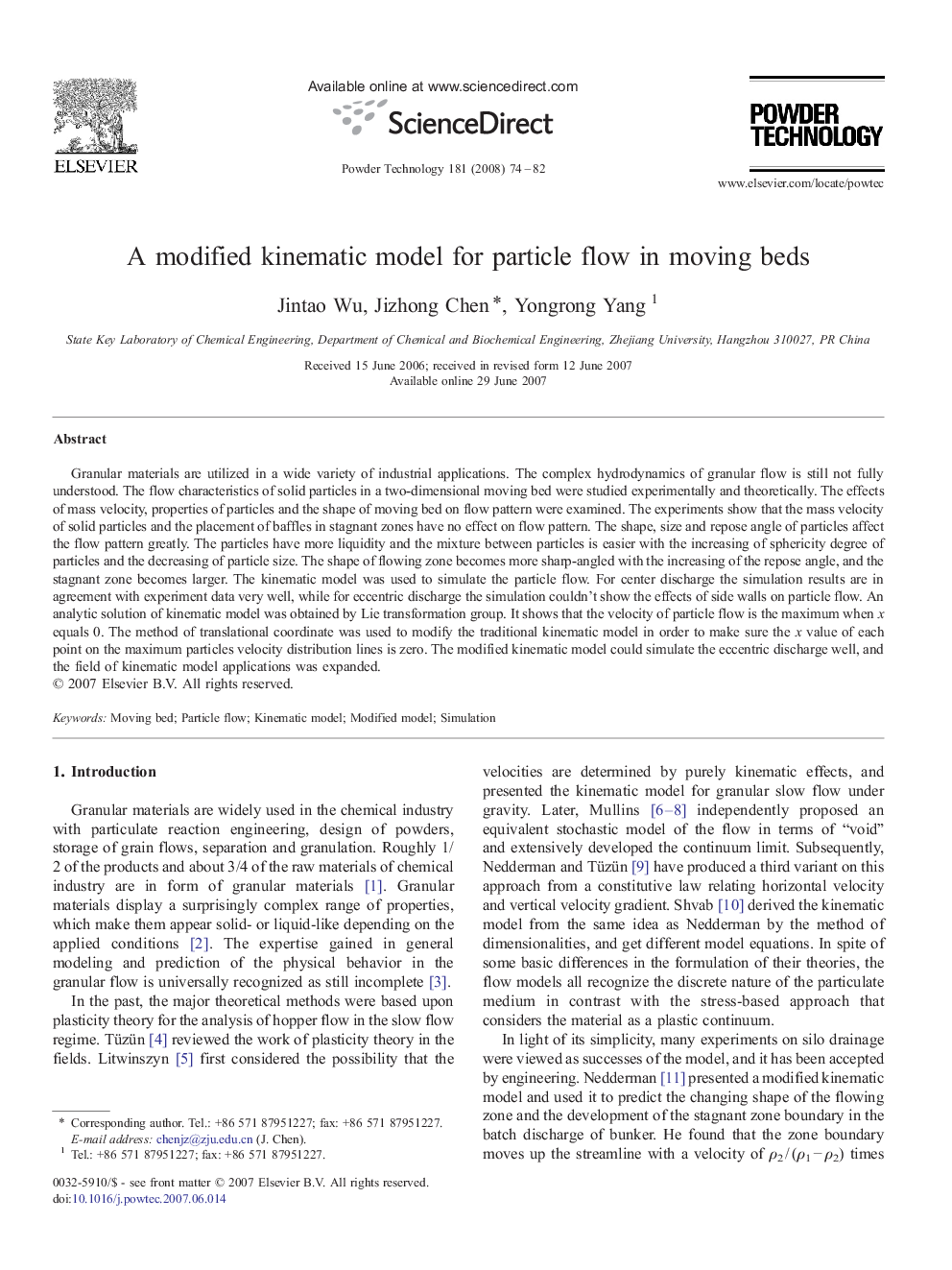| کد مقاله | کد نشریه | سال انتشار | مقاله انگلیسی | نسخه تمام متن |
|---|---|---|---|---|
| 238962 | 465786 | 2008 | 9 صفحه PDF | دانلود رایگان |

Granular materials are utilized in a wide variety of industrial applications. The complex hydrodynamics of granular flow is still not fully understood. The flow characteristics of solid particles in a two-dimensional moving bed were studied experimentally and theoretically. The effects of mass velocity, properties of particles and the shape of moving bed on flow pattern were examined. The experiments show that the mass velocity of solid particles and the placement of baffles in stagnant zones have no effect on flow pattern. The shape, size and repose angle of particles affect the flow pattern greatly. The particles have more liquidity and the mixture between particles is easier with the increasing of sphericity degree of particles and the decreasing of particle size. The shape of flowing zone becomes more sharp-angled with the increasing of the repose angle, and the stagnant zone becomes larger. The kinematic model was used to simulate the particle flow. For center discharge the simulation results are in agreement with experiment data very well, while for eccentric discharge the simulation couldn't show the effects of side walls on particle flow. An analytic solution of kinematic model was obtained by Lie transformation group. It shows that the velocity of particle flow is the maximum when x equals 0. The method of translational coordinate was used to modify the traditional kinematic model in order to make sure the x value of each point on the maximum particles velocity distribution lines is zero. The modified kinematic model could simulate the eccentric discharge well, and the field of kinematic model applications was expanded.
The kinematic model was used to simulate the particle flow widely because of its simplicity. However, the traditional kinematic model does not take the effects of side walls on particle flow into account, and there is evident difference between simulation results and experiment data for eccentric discharge. An analytic solution of kinematic model was obtained by Lie transformation group. It shows that the velocity of particle flow is the maximum when x equals 0. The method of translational coordinate was used to modify the traditional kinematic model in order to make sure the x value of each point on the maximum particles velocity distribution lines is zero. The modified kinematic model could simulate the eccentric discharge well, and the field of kinematic model applications is expanded.Figure optionsDownload as PowerPoint slideThe comparison of PF-resin particle positions between experiment and simulation results with modified kinematic model (eccentric discharge) when mass flux is 3.740 g s− 1.
Journal: Powder Technology - Volume 181, Issue 1, 30 January 2008, Pages 74–82